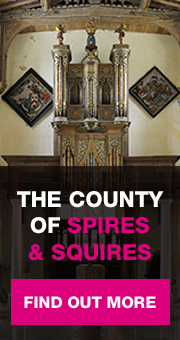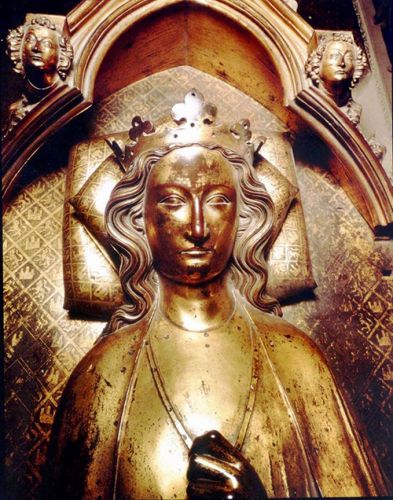5th February 2019
As the days lengthen and the birds start to sing, thoughts turn to love and courtship. This month I want to share the story of a deeply romantic gesture from a King of England to his beloved Queen. This love began in 1254 upon their marriage, and evidence of its enduring strength is still to be found in Hardingstone and Geddington, Northamptonshire.
When fifteen year old Edward I married his nearly thirteen year old bride, Eleanor of Castile, it was a strictly political arrangement. Unusually, the couple fell deeply in love, and were rarely separated. Edward became known as ‘the Hammer of the Scots’, one of England’s greatest and most successful kings. But Eleanor was not a meek medieval princess submissive to the demands of her royal husband. She was better educated and probably more intelligent than Edward, a dynamic and forceful woman with strong views and ambitions of her own.
Unusually for a woman of her era, Eleanor loved to read, even managing her own scriptorium producing illustrated manuscripts. She introduced architectural improvements such as tiled bathrooms, and garden design incorporating fountains and other features familiar to her from Castile. Domestic luxuries such as forks, carpets, and other refinements filled the beautiful castle of Leeds in Kent, which she had purchased for herself. In fact, her skills at property management were such that she also successfully managed the acquisitions for the Crown estates.
Eleanor’s father King Ferdinand III of Castile had been a heroic Crusader, and her brother an academic prodigy, both interested in warfare and kingship. This upbringing assisted Eleanor’s development into a highly effective and important member of King Edward’s inner circle of advisors. Occasionally she even took command, and went on campaign with her husband.
As a Queen, it was her task to produce children, and she gave birth to fifteen or sixteen. Many of course died young, but those who survived were married to cement political alliances. Eleanor was involved in all the negotiations at the very highest level.
Eleanor was a model Queen, but continuous hard work took a toll on her health. Edward relied on her skills and judgement, and was distraught when she was taken ill during a progress, probably inspecting Royal properties. It seems he was with her when she died, along with her daughters. Edward determined that his wife should have the most honourable burial.
Eleanor died in Harby, Lincolnshire, but her body was to be buried in Westminster. A magnificent cortège departed from Grantham headed for London, and every place it rested overnight during the twelve day journey, Edward raised a monument to his wife.These are known as the Eleanor Crosses, and today only three remain, two in Northamptonshire. Each design was a work of art, incorporating three tiered storeys with common elements such as Eleanor portrayed in coronation robes with her heraldic shields, pinnacles and foliate cornices, each monument topped with a cross. Unusually for the time, roses are a common decorative theme, and we might guess that they had some special significance. Slender and delicate, the Geddington cross features many roses. The Hardingstone cross is more substantial, and features another important decorative element, books, one of Eleanor’s particular interests.The third is at Waltham, and has suffered much from both damage and restoration.
Sadly all of the crosses suffered during the Reformation, and the remainder were lost. This is a fate which must not be allowed to happen to our Northamptonshire crosses. The Hardingstone cross has suffered from serious neglect during the last fifty years, and is on the Historic England ‘At Risk’ register. An active group on Facebook has been campaigning to prevent further decay, with results. Conservation work is in hand now that Northampton Borough Council has finally accepted responsibility for its maintenance, and work will start in spring.
These monuments are precious to us today, as Eleanor was to Edward. In a letter, he refers to her as ‘whom living we deeply cherished, and whom we cannot cease to love now she is dead’. We need to cherish these monuments to love, for future generations to wonder at.
For more information read Eleanor of Castile, the Shadow Queen by Sara Cockerill
Your login details have been used by another user or machine. Login details can only be used once at any one time so you have therefore automatically been logged out. Please contact your sites administrator if you believe this other user or machine has unauthorised access.








